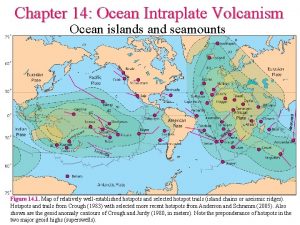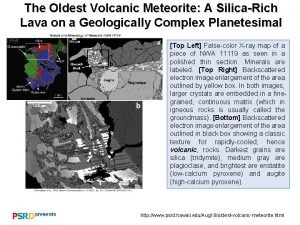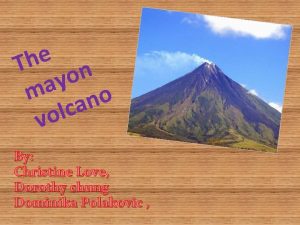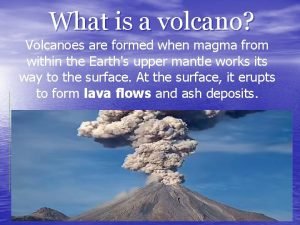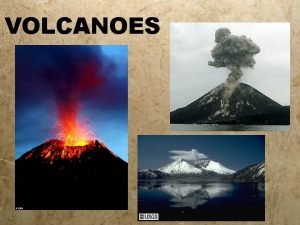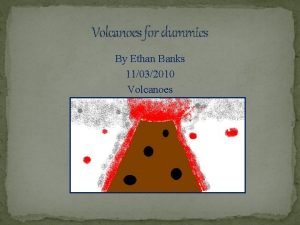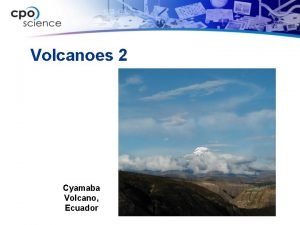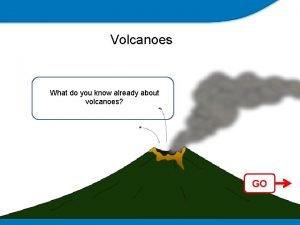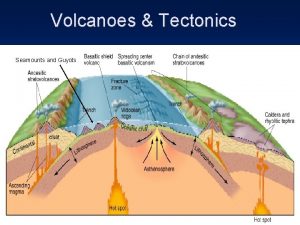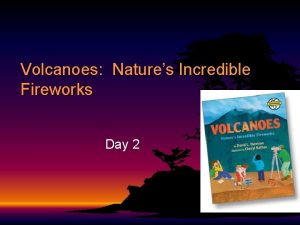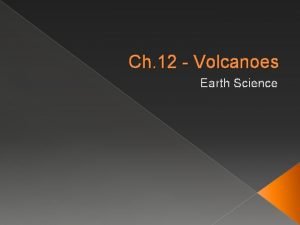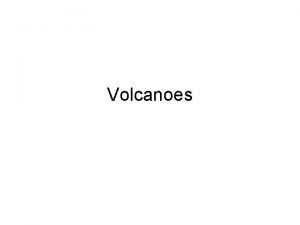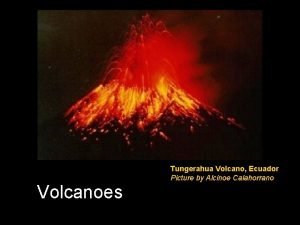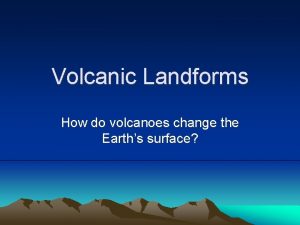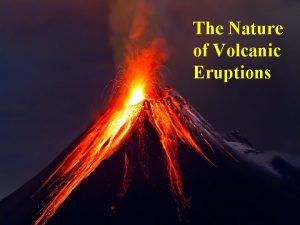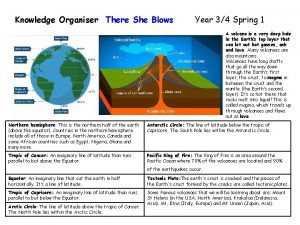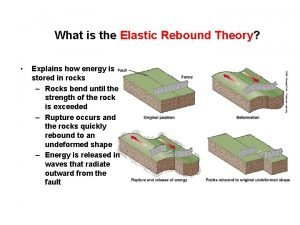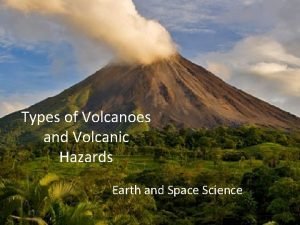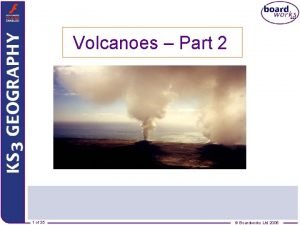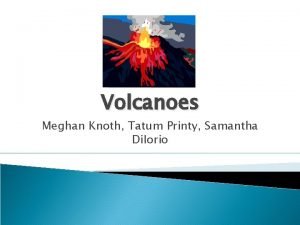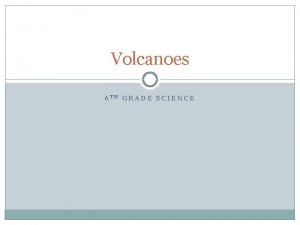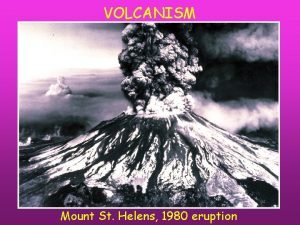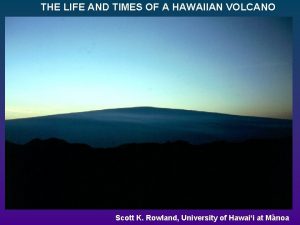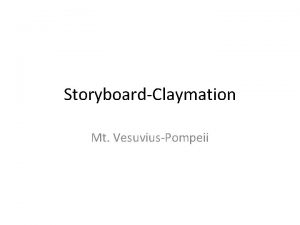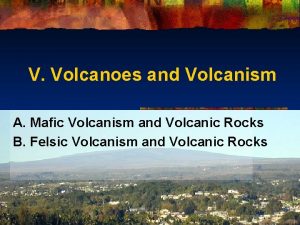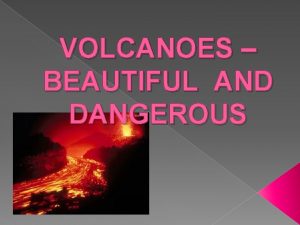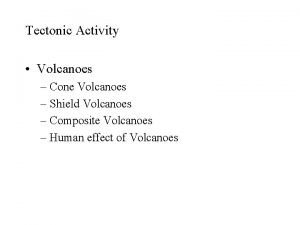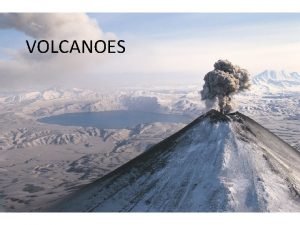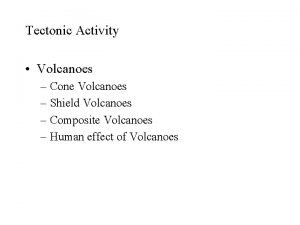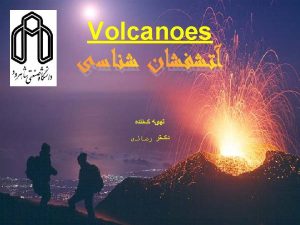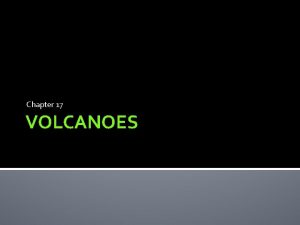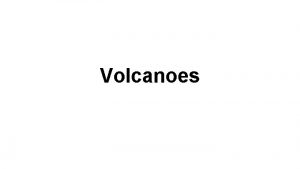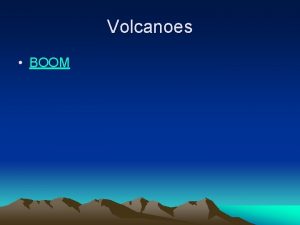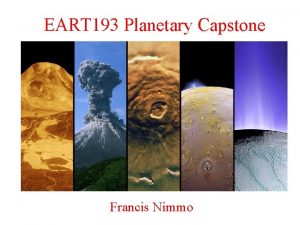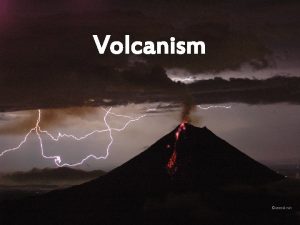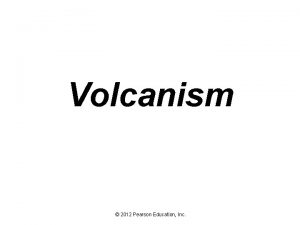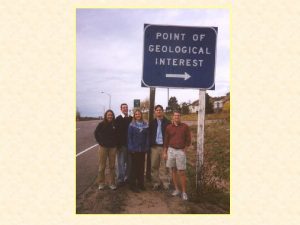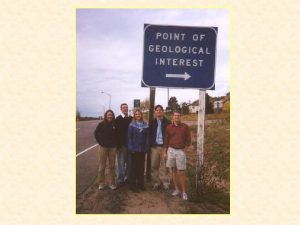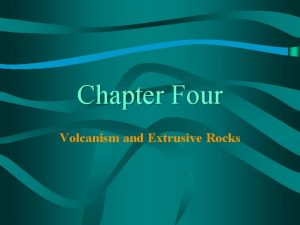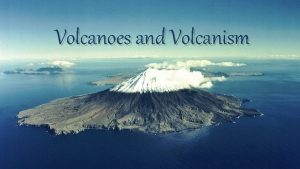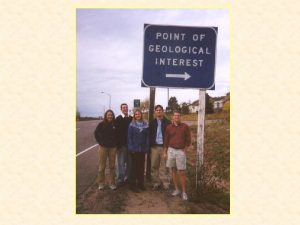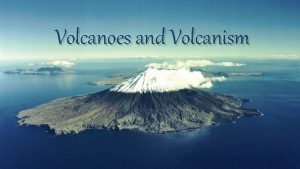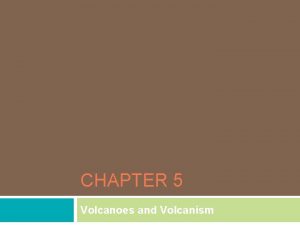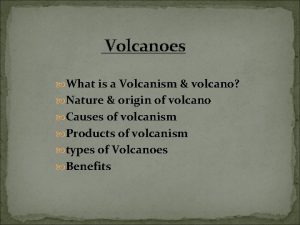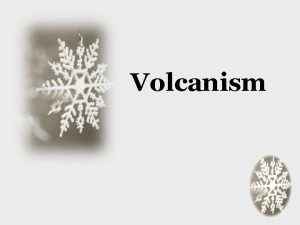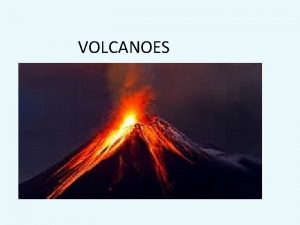Volcanism The study of volcanoes and their activities






















































- Slides: 54

Volcanism The study of volcanoes and their activities


5/18/80 - Before

“Vancouver, this is it!” During

May 18, 1980


July 22, 1980

After

The Lahar

Cascade Volcanic Peaks Baker Adams Hood Lassen

Shuksan Shasta Rainier St. Helens A picturesque, cone-shaped structure that periodically erupts violently!

Are all eruptions explosive?

Why the difference? • Temperature – hotter is less viscous • Composition – the more silica, the more viscous • Dissolved gases – gases increase fluidity and decrease viscosity • Viscosity increases explosiveness

Materials extruded from volcanoes • Lava – pahoehoe (ropy), aa (blocky) and pillow lava (water cooled rolling formation) • Gases – 1 -6% of the mass (water vapor, carbon dioxide, nitrogen, sulfur, chlorine, hydrogen, argon, and methane) • Pyroclastics – ejected fragments

Pahoehoe

A’a

Pyroclastic flow A pyroclastic flow is a groundhugging avalanche of hot ash, pumice, rock fragments, and volcanic gas that rushes down the side of a volcano as fast as 100 km/hour or more. The temperature within a pyroclastic flow may be greater than 500° C, sufficient to burn and carbonize wood.


Pyroclastics • • • Ash and dust Cinders Lapilli (little stones) Pumice (frothy lava) Blocks (large rocks) Bombs (blobs of lava)


Volcanic Cones • Successive eruptions from a central vent result in a mountainlike accumulation of material called a volcano (cone) • Let’s look at shield, cinder, and composite cone types!

This type of volcano can be hundreds of miles across and many tens of thousands of feet high. The individual islands of the state of Hawaii are simply large shield volcanoes. Mauna Loa, a shield volcano on the "big" island of Hawaii, is the largest single mountain in the world, rising over 30, 000 feet above the ocean floor and reaching almost 100 miles across at its base. Shield volcanoes have low slopes and consist almost entirely of frozen lavas. They almost always have large craters at their summits.

Shield cone

Mauna Loa

As you might expect from the name, these volcanoes consist almost entirely of loose, grainy cinders and almost no lava. They are small volcanoes, usually only about a mile across and up to about a thousand feet high. They have very steep sides and usually have a small crater on top.

Cinder Cone


These volcanoes are typically tens of miles across and ten thousand or more feet in height. As illustrated in the figure above, they have moderately steep sides and sometimes have small craters in their summits. Volcanologists call these "strato-" or composite volcanoes because they consist of layers of solid lava flows mixed with layers of sand- or gravel-like volcanic rock called cinders or volcanic ash.

Composite Cone


Volcanic Hazards • • • Explosion – Krakatoa Burial – Vesuvius (Pompeii) Nuee ardente – Pelee (St. Pierre) Lahar – Mt. St. Helens & Nevado del Ruiz Lava flow - Kilauea

Krakatoa before and after

Vesuvius and Pompeii

St. Pierre?

Poisonous Gases


Kilauea

Other Volcanic Landforms

Caldera


Volcanic dome • Viscous magma • Usually in association with existing cones • Some independent, like Mono Craters CA

Volcanic neck • Vent materials more resistant • Flanks wear away • “neck” left behind


Vents and pipes

Fissure flows

Columbia Flood Basalts

Pyroclastic flows

Distribution of Igneous Activity • • Zones of divergence (seafloor spreading) Zones of convergence (subduction) Therefore, crustal plate margins Hot spots (intraplate volcanism)






 Intraplate volcanism
Intraplate volcanism Volcanism
Volcanism Chapter 8 earthquakes and volcanoes
Chapter 8 earthquakes and volcanoes Interesting facts about mt mayon
Interesting facts about mt mayon What is constructive force
What is constructive force Indoor and outdoor sports
Indoor and outdoor sports Primary and support activities
Primary and support activities Tertiary activities definition
Tertiary activities definition Description of volcano
Description of volcano How are volcanoes classified
How are volcanoes classified Volcanoes for dummies
Volcanoes for dummies Cotapoxi
Cotapoxi How are volcanoes made
How are volcanoes made What do you already know about volcanoes
What do you already know about volcanoes Three main ways volcanoes are created
Three main ways volcanoes are created Volcanoes nature's incredible fireworks
Volcanoes nature's incredible fireworks Types of volcanoes
Types of volcanoes How are volcanoes formed
How are volcanoes formed Volcanic belts form along _____.
Volcanic belts form along _____. Active volcanoes map
Active volcanoes map Krakatoa volcano
Krakatoa volcano Shield volcano
Shield volcano Volcanoes knowledge organiser
Volcanoes knowledge organiser Rebound theory
Rebound theory Types of volcanoes
Types of volcanoes Ring of fire volcanoes
Ring of fire volcanoes Magma chamber
Magma chamber Shield volcanoes
Shield volcanoes Factors affecting volcanic eruption
Factors affecting volcanic eruption Name volcanoes
Name volcanoes Where are volcanoes
Where are volcanoes A'a hawaiian
A'a hawaiian Volcanoes of italy map
Volcanoes of italy map The statement of cash flows helps users
The statement of cash flows helps users Romeo and juliet in modern english
Romeo and juliet in modern english Hát kết hợp bộ gõ cơ thể
Hát kết hợp bộ gõ cơ thể Frameset trong html5
Frameset trong html5 Bổ thể
Bổ thể Tỉ lệ cơ thể trẻ em
Tỉ lệ cơ thể trẻ em Chó sói
Chó sói Chụp phim tư thế worms-breton
Chụp phim tư thế worms-breton Chúa sống lại
Chúa sống lại Các môn thể thao bắt đầu bằng tiếng chạy
Các môn thể thao bắt đầu bằng tiếng chạy Thế nào là hệ số cao nhất
Thế nào là hệ số cao nhất Các châu lục và đại dương trên thế giới
Các châu lục và đại dương trên thế giới Công thức tính độ biến thiên đông lượng
Công thức tính độ biến thiên đông lượng Trời xanh đây là của chúng ta thể thơ
Trời xanh đây là của chúng ta thể thơ Mật thư anh em như thể tay chân
Mật thư anh em như thể tay chân Phép trừ bù
Phép trừ bù độ dài liên kết
độ dài liên kết Các châu lục và đại dương trên thế giới
Các châu lục và đại dương trên thế giới Thơ thất ngôn tứ tuyệt đường luật
Thơ thất ngôn tứ tuyệt đường luật Quá trình desamine hóa có thể tạo ra
Quá trình desamine hóa có thể tạo ra Một số thể thơ truyền thống
Một số thể thơ truyền thống Cái miệng nó xinh thế chỉ nói điều hay thôi
Cái miệng nó xinh thế chỉ nói điều hay thôi
